Female Network

What are the most common challenges faced by female entrepreneurs ?
Female entrepreneurs face unique challenges, including lackFemale entrepreneurs face unique challenges, including lack funding opportunities due to gender bias limited funding opportunities due to gender bias, work-life balance issues, gender bias in the business environment, and limited support networks. Despite these obstacles, many have successfully overcome them by leveraging their strengths and building supportive networks, advocating for change within their industries.

What strategies can female entrepreneurs use to secure funding for their ventures ?
Female entrepreneurs face unique challenges when it comes to securing funding for their ventures. However, there are several strategies that can be used to increase the chances of success. These include networking and building relationships, developing a solid business plan, leveraging personal networks, seeking out grants and awards, considering crowdfunding, and utilizing online funding platforms. By staying persistent and never giving up, female entrepreneurs can secure the funding they need to bring their dreams to life.

How can male-dominated fields encourage more female participation ?
In many industries, including technology, engineering, and finance, women are underrepresented. Encouraging more female participation in these male-dominated fields is not only beneficial for diversity and inclusion but also for innovation and economic growth. Here are some strategies that can be implemented to attract and retain women in these sectors: Strategies to Encourage Female Participation: 1. Education and Outreach Programs 2. Workplace Culture and Environment 3. Policies and Practices 4. Networking and Professional Development 5. Public Awareness and Media Representation

What advice would successful businesswomen give to aspiring female entrepreneurs ?
Advice from successful businesswomen to aspiring female entrepreneurs includes believing in oneself, continuous learning and personal development, embracing risks and challenges, effective financial management, maintaining a work-life balance, collaboration and delegation, strong branding and marketing strategies, and upholding ethical practices and social responsibility. By following this advice, aspiring female entrepreneurs can navigate the challenges of starting and growing their own businesses while staying true to their values and goals.

How does female leadership differ from male leadership ?
Female and male leaders exhibit distinct characteristics in communication, decision-making, management styles, emotional intelligence, and negotiation tactics. Female leaders often prioritize collaboration, consensus, and empathy, while male leaders tend to be more directive, risk-prone, and competitive. Recognizing these differences can foster diverse leadership environments that value a range of perspectives and strengths.

What role does mentorship play in the success of female entrepreneurs ?
Mentorship plays a crucial role in the success of female entrepreneurs, providing guidance and support that can help them navigate challenges. It offers access to experienced advice, networking opportunities, confidence building, skill development, accountability, emotional support, and insights into overcoming barriers. Seeking out a mentor can increase the chances of success for female entrepreneurs.

How do gender stereotypes affect female adolescents' participation in sports ?
Gender stereotypes have a significant impact on female adolescents' participation in sports. These stereotypes can limit opportunities, discourage participation, and create barriers to success for young women in athletics. In this article, we will explore the ways in which gender stereotypes affect female adolescents' involvement in sports and discuss strategies for promoting gender equality in sports. One of the most significant ways that gender stereotypes affect female adolescents' participation in sports is by limiting their opportunities. Many schools and sports organizations still prioritize male athletes over female athletes, resulting in fewer resources and opportunities for girls to participate in sports. This can lead to a lack of access to quality coaching, training facilities, and equipment, as well as limited opportunities to compete at higher levels. Gender stereotypes also discourage female adolescents from participating in sports by perpetuating harmful beliefs about women's abilities and interests. These beliefs suggest that sports are not appropriate or desirable for girls, leading many young women to avoid athletic activities altogether. Additionally, some girls may feel pressured to conform to traditional gender roles, which often do not include participation in sports. Even when female adolescents do participate in sports, gender stereotypes can create barriers to their success. These barriers include discrimination, biased expectations, and unequal treatment compared to male athletes. For example, some coaches may have lower expectations for female athletes or provide less support and encouragement than they would for male athletes. Additionally, female athletes may face discrimination from opponents, officials, or even their own teammates. To combat the negative effects of gender stereotypes on female adolescents' participation in sports, it is essential to promote gender equality in athletics. Some strategies for achieving this goal include providing equal opportunities and resources for both male and female athletes; encouraging all students to participate in sports regardless of gender; educating coaches, parents, and peers about the benefits of sports for female adolescents; addressing discriminatory behavior and creating a culture of respect and inclusion within sports organizations; and celebrating the achievements of female athletes through media coverage and recognition events.

How do male celebrities approach fashion differently from female celebrities ?
Fashion is a form of self-expression, and it's an industry that both male and female celebrities have taken very seriously. However, the way they approach fashion can often differ significantly. Here are some key differences: 1. Female celebrities are generally more experimental with their fashion choices while male celebrities tend to be more conservative. 2. Accessories play a huge role in female celebrity fashion while male celebrities often opt for subtlety over statement pieces. 3. Red carpet events are seen as an opportunity for female celebrities to showcase their style while male celebrities tend to dress up in predictable outfits like tuxedos and well-tailored suits. 4. Female celebrities are more likely to collaborate with fashion brands or launch their own clothing lines while male celebrities often prefer classic styles and subtle accessories.

How can companies support the development of female leadership talent ?
Companies can support the development of female leadership talent by implementing a variety of strategies and programs that address the unique challenges faced by women in the workplace. Here are some key ways to foster female leadership: 1. Create a diverse and inclusive culture 2. Provide mentoring and sponsorship opportunities 3. Offer professional development programs 4. Foster a collaborative work environment 5. Set clear goals and measure success

Are there any lifestyle changes that can boost female fertility ?
Female fertility can be influenced by various lifestyle factors, including weight, diet, exercise, stress levels, smoking, and alcohol intake. Making changes in these areas can boost fertility. Maintaining a healthy weight, eating a balanced diet, getting regular exercise, managing stress levels, quitting smoking, limiting alcohol intake, and considering alternative treatments like herbal supplements and acupuncture can all contribute to improving female fertility. It's essential to work closely with a healthcare provider to determine which lifestyle changes are best suited for individual needs and circumstances.
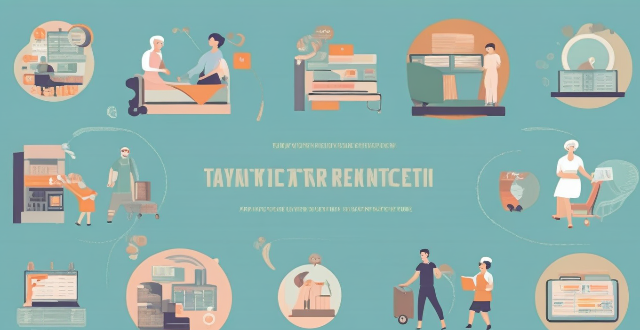
What is the role of a female therapist in treating women's psychological problems ?
The text discusses the role of a female therapist in treating women's psychological problems, emphasizing empathy, understanding, building trust, addressing gender-specific issues, and providing supportive interventions. The article suggests that women may feel more comfortable sharing their experiences with someone who can relate to their struggles and acknowledges the importance of validation for women who have been dismissed or minimized by others. Building trust is essential, especially for women who have experienced trauma or abuse, and creating a safe space involves establishing clear boundaries and maintaining confidentiality. Cultural sensitivity is also crucial when working with women from different backgrounds. Addressing gender-specific issues such as reproductive health concerns, body image, and trauma requires specialized treatment approaches. Providing supportive interventions like mindfulness practices and group therapy can help women connect with others and receive support from peers. Overall, the role of a female therapist is multifaceted and involves creating a safe and non-judgmental space to help women navigate their unique challenges and work towards improved mental health outcomes.

How does the media influence perceptions of female athletes and their abilities compared to male athletes ?
The media significantly impacts perceptions of female athletes, often reinforcing stereotypes and traditional gender roles. Disparities in coverage quantity and quality, language biases, and visual representations contribute to these perceptions. Social media also influences how female athletes are viewed, with a focus on appearance and personal life. Media outlets should strive for equality in coverage to ensure female athletes receive the recognition they deserve.

Is it safe for solo female travelers to go backpacking in Europe ?
Backpacking through Europe is a dream for many adventurous souls, including solo female travelers. However, the question of safety often arises when considering such an endeavor. Here's a comprehensive look at the factors involved: ## General Safety Considerations ### Cultural Awareness - Understanding local customs and norms can help avoid unsafe situations. - Researching ahead about the cultural dos and don'ts of each country can make your travel experience smoother and safer. ### Common Sense Precautions - Basic safety precautions apply universally. - Keep your valuables secure, avoid walking alone at night in poorly lit areas, and stay aware of your surroundings. ### Staying Connected - Having a way to communicate is essential for emergencies. - Consider getting a local SIM card or ensuring your phone plan includes international coverage. ## Specific Risks and Solutions ### Scams Targeting Solo Travelers - Be wary of common tourist scams. - Scammers often target solo travelers, especially females, with tricks like overcharging, fake petitions, or distraction techniques. ### Physical Safety Concerns - Trust your instincts if you feel unsafe. - If a situation or person makes you uncomfortable, remove yourself from the situation. ### Health and Medical Emergencies - Have a plan for medical situations. - Check if your health insurance covers international travel. ## Resources for Solo Female Travelers ### Traveler Communities - Joining communities of fellow travelers can provide support and advice. - Websites and forums like Solo Travel Society and Girls LOVE Travel offer tips, recommendations, and a sense of community. ### Safety Apps - There are apps designed specifically for safety. - Apps like bSafe or Kitestring allow you to alert contacts in case of an emergency or if you need to check in with someone. ### Local Law Enforcement Contacts - Know who to contact in case of an emergency. - Save local emergency numbers in your phone and make note of nearby police stations or consulates that can offer assistance. ## Conclusion ### Personal Responsibility - Your safety is largely in your own hands. - While Europe offers a wealth of experiences for solo female travelers, taking personal responsibility for your safety is key. This includes planning ahead, staying informed, and using common sense. ### Embrace the Journey - Enjoy the adventure while being cautious. - Don't let fear hold you back. With preparation and awareness, backpacking through Europe as a solo female traveler can be a transformative and incredibly rewarding experience.

In what ways do strong female characters in literature shape our perceptions of women's roles and capabilities ?
Strong female characters in literature challenge traditional gender roles and showcase the capabilities of women beyond their stereotypical representations. They inspire women readers, defy gender stereotypes, promote diverse representation, celebrate female relationships, break societal barriers, and expand horizons. These characters shape our perceptions of women's roles and capabilities and promote gender equality.

Is there such a thing as too formal or too casual for female professionals ?
Dressing appropriately is crucial for female professionals to make a good impression in the workplace. Finding the right balance between being too formal and too casual can be challenging, but it's essential to demonstrate professionalism, boost confidence, and create a positive first impression. To strike the right balance, female professionals should understand their company's culture, consider the occasion, accessorize wisely, mix and match formal and casual pieces, choose appropriate footwear, and pay attention to fit and color. By following these tips, female professionals can make a lasting impression in the workplace.
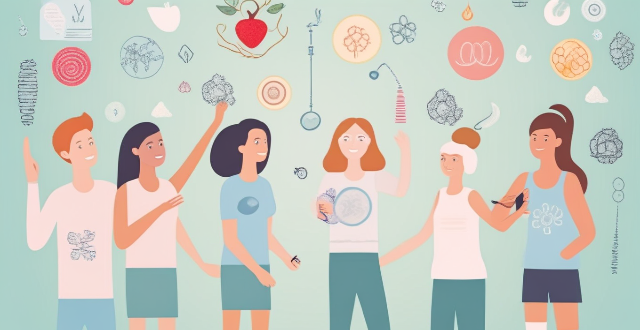
What are the key challenges faced by female-centric non-profit organizations, and how can they be overcome ?
Female-centric non-profit organizations face several key challenges, including limited funding and resources, lack of visibility and recognition, gender bias and stereotyping, limited access to technology and digital tools, and balancing advocacy and service delivery. To overcome these challenges, organizations can explore alternative funding sources, increase visibility through social media and community events, prioritize diversity and inclusion, leverage cost-effective technology solutions, and build alliances with other organizations. By addressing these challenges, female-centric non-profit organizations can effectively support women and girls and create positive change in their communities.

How does network expansion affect the overall network performance ?
Network expansion can significantly impact overall performance, offering benefits such as increased bandwidth, improved redundancy, and enhanced connectivity. However, challenges like compatibility issues, security concerns, and complexity management must be addressed to maintain optimal performance. Careful planning is crucial for successful network expansion.
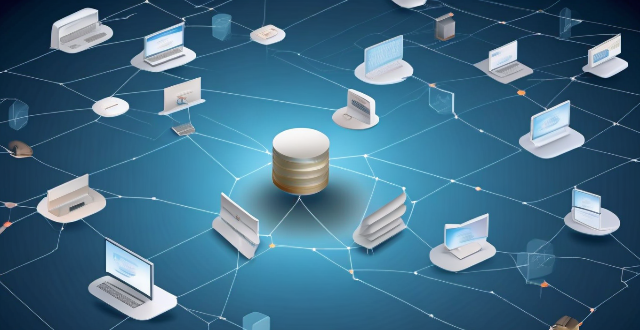
How does network slicing differ from traditional network management techniques ?
Network slicing, enabled by SDN and NFV, allows creating multiple virtual networks on a common infrastructure for tailored services like IoT and automotive systems. It offers dynamic resource allocation, scalability, better security, and can simplify management through automation. In contrast, traditional network management is monolithic with static resources, complex and potentially less secure. Network slicing is a more adaptable solution for diverse and growing connectivity needs.

How do compression algorithms contribute to network optimization ?
Compression algorithms are crucial for network optimization by reducing data transmission, thus improving speed, bandwidth consumption, and network performance. They also enhance security and disaster recovery capabilities.

What is the cost involved in expanding a network ?
Expanding a network involves costs in hardware, software, labor and other areas.

What causes network latency ?
Network latency is a critical metric in networking, referring to the delay that data experiences when traveling between two points in a network. Understanding the causes of network latency is essential for optimizing productivity, collaboration, and user experience in today's digitally reliant world. The article delves into the various factors contributing to network latency and why it matters.

What factors affect wireless network coverage ?
**Wireless network coverage is influenced by multiple factors that include physical obstructions, distance from the access point, interference from other devices, environmental conditions, network infrastructure, device capabilities, regulatory limitations, and security settings.**

Can network expansion solve issues related to network congestion ?
## Topic Summary: Network Expansion as a Solution to Network Congestion Network congestion is a common problem that affects the performance of networks, leading to delays and reduced efficiency. One potential solution to this issue is network expansion, which involves increasing the capacity of the existing infrastructure by adding more hardware or upgrading existing equipment. This approach can alleviate network congestion by providing additional bandwidth for data transmission, improving overall performance, and reducing latency. However, network expansion also has its drawbacks, including high costs and the need for careful planning and implementation. Additionally, addressing the underlying causes of congestion is crucial for long-term success.
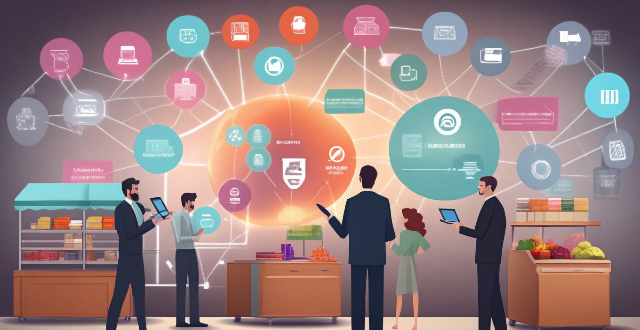
What are the benefits of using network slicing for businesses ?
Network slicing technology allows businesses to create multiple virtual networks on a shared physical infrastructure, offering benefits such as improved performance, cost efficiency, enhanced security, faster time-to-market, and increased innovation potential.

What is the role of a network hub in a computer network ?
In this text, the role of a network hub in a computer network is discussed. The main functions of a network hub are data transmission, connectivity, and collision domain management. However, the device also has limitations such as bandwidth sharing, security risks, and scalability issues. Despite its importance in connecting devices and allowing resource sharing, more advanced networking devices are often used in larger and more complex networks to overcome these limitations.

What technology is used to extend network coverage in remote locations ?
In remote locations, several technologies are used to extend network coverage, including satellite internet, wireless broadband (Wi-Fi), cellular data, long-range radio networks (LoRaWAN), and fiber optic cables. The choice of technology depends on factors such as cost, availability, and the specific needs of the users in those areas.

Can network slicing improve internet speed and reliability ?
Network slicing is a concept that divides a physical network into multiple virtual networks, each optimized for a specific use case. This approach can improve internet speed and reliability by enabling efficient resource allocation, enhancing performance through customization and optimization, and improving reliability through isolation and scalability. However, effective implementation requires careful planning and coordination among stakeholders involved in the network infrastructure.

How can I detect and prevent network intrusions ?
To detect and prevent network intrusions, implementTo detect and prevent network intrusions, implement approach that includes: conducting training employees on security best practices, and regularly updating software and firmware. This comprehensive approach can significantly reduce the risk of network intrusions and protect an organization's valuable assets.

How does network congestion impact latency ?
The impact of network congestion on latency can be significant and can have a negative effect on the overall performance of the network. This can include increased transmission time, higher drop rates, reduced bandwidth availability, and impacts on application performance. It is important for network administrators to monitor and manage network traffic to minimize the impact of congestion on latency and ensure that applications continue to function properly.
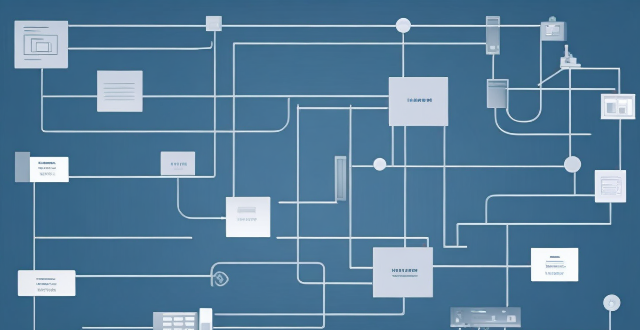
Can you explain the function of a network switch in a home network setup ?
The article discusses the function of a network switch in a home network setup. The primary function of a network switch is to connect multiple devices together, either through Ethernet cables or wireless connections. It also manages data traffic within the network by forwarding data packets to their intended destination based on their IP address. Additionally, network switches enhance network performance by providing dedicated bandwidth to each connected device and prioritizing certain types of traffic over others. Finally, network switches come with various security features that help protect your home network from unauthorized access and cyber threats.